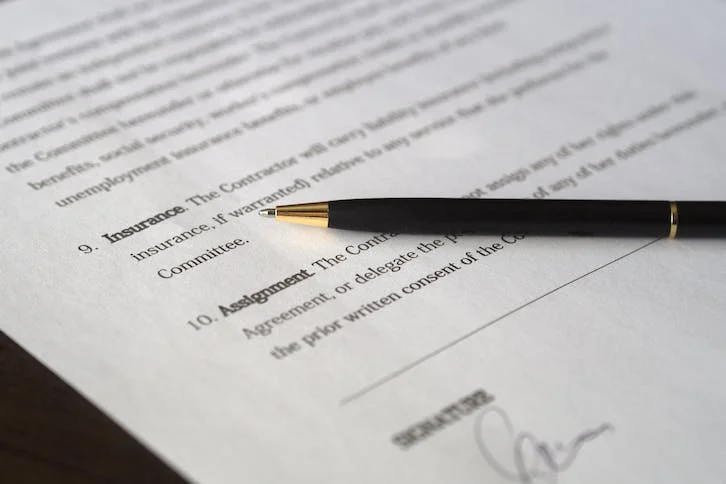
How to write a business letter
Mastering the option of how to write a professional business letter is essential in today's global business world. This method of communication in writing business letters is necessary for professional partnerships. It conveys knowledge and your conversations' professionalism and respect.
A business letter is not just a formality; it represents your company's ideals and professionalism. The skill to write a business letter well can set the tone for your professional encounters and determine your impression.
What is a business letter
Business letters are more than just correspondence — they're professional tools essential for a variety of purposes within the business world. One such purpose is engaging with business plan writers, who play a crucial role in crafting detailed and effective strategies for companies. These letters are used to communicate vital information, make requests, and resolve business concerns between companies or between organizations and their clients, workers, or stakeholders.
Structure and format are as important as content in a business letter. When you ask “How to write a business letter,” you should include a lot of the details: the sender's contact information, date, recipient's location, formal greeting, letter body, complimentary closing, and signature.
There are types of business letters, each for a specific business situation. For instance, an inquiry letter requests information, while an order letter places orders. Sales letters promote goods and services, while complaint letters handle complaints. Effective corporate communication requires an understanding of these types of business letters. Also, be sure to check our guide on writing a business essay!
Writing tip from SpeedyPaper
When to send a business letter
Decisions on writing business letters are vital in business. These letters have several uses beyond regular communication. A business letter is often sent for formal paperwork, such as contractual agreements, complaints, or requests. These situations require formality and record-keeping that emails and verbal communication cannot offer.
In a non-causal relationship, a business letter is suitable. It includes contacting new clients, partners, or other external entities that require a professional first impression. In these circumstances, a business letter can set the tone for future contacts with respect and professionalism.
In the digital age, business letters online are common. Electronic business letters are transmitted via email or Internet platforms. Although the medium has changed, precise, concise, and formal communication still applies. When an immediate response is needed, online business letters are perfect, but they still need formality.
What are the parts of the business letter
For formality and clarity, a business letter follows a conventional structure. Understanding these elements helps you write a business letter. The primary sections of a business letter, with brief descriptions and examples, are:
- Sender's Address: An individual or company's address is usually at the top of the letter. It's necessary for letter origin and return correspondence.
- Date: Below the sender's address, write the letter's date. Recording conversation times is crucial.
- Recipient's Address: This section includes the recipient's name, title, company, and address. Sending the letter to the right person is critical.
- Greeting: Common greetings are "Dear [Name]" and "Dear Sir/Madam." It establishes letter formality.
- Body: The letter's body conveys your message. Clear, simple, and to the point. General body paragraphs include an introduction, main content, and conclusion.
- Complimentary Close: This is a polite way to end the letter, such as "Sincerely," "Best regards," or "Yours faithfully." It should match the level of formality of the salutation.
- Signature: The sender should sign the letter here, which is an essential aspect of personalizing and authenticating the letter.
- Typed Name and Title: Below the signature, the sender's typed name and title are included for clarity and formal identification.
- Enclosures and CC: Write "Enclosures." if the letter contains other documents. Use "CC" and names to copy others on the letter.
An organized business letter is essential for professional communication. The key to writing a good letter is recognizing its parts and their relevance. From the salutation to the signature, every detail is crucial to communicating clearly and professionally.
Speedy paper helper online can help you write effective business letters in today's fast-paced commercial world. This assistance can help you organize, tone, and personalize your business letters to achieve their goals and make a good impression.
How to write a business letter
Writing a business letter requires knowledge of format, tone, and content for professional communication. A more detailed guide to writing business letters:
Understanding the purpose
Understand the aim of a business letter before drafting one. Want to inform, request, convince, or respond? The letter's tone and details depend on its objective. A letter to persuade a client will sound different from one accepting payment. Initial clarity aids communication concentration and effectiveness.
Gathering necessary information
Gather all letter-related information before writing. It comprises the recipient's full name, title, address, and any important dates, names, or figures involved in your communication. Your letter will be accurate and complete with this information. For context and continuity, check earlier communications or relevant documents.
Writing tip from SpeedyPaper
Choosing the right business letter format
For professionalism, business letters should follow an accepted business letter format. The header should include your address, date, and recipient's address. As with finance homework help, writing a traditional business letter needs attention to detail and adherence to rules.
The letter should begin with a polite greeting to set the tone. Following this, the letter body is vital. It usually has an introduction, body, and conclusion. The opening should simply establish the letter's aim, while the body details it. Summarize the letter's main points and reiterate any essential actions or answers.
Drafting the letter
Drafting the letter involves putting your thoughts into words in a clear, concise, and professional manner. Start with a polite salutation, like "Dear Mr./Ms. [Last Name]." The introductory paragraph should briefly state the primary purpose of the letter. In the body, present your message in a logical order, using separate sections for different points or ideas. Be direct but courteous, and avoid using overly complex sentences or jargon. Conclude with a paragraph that summarizes your main points or includes a call to action, if applicable. Then, end with a polite closing, such as "Sincerely" or "Best regards."
Reviewing and revising
Reread and modify your work after writing. Make sure your message is clear and accessible of grammar and spelling issues. Check that all facts and numbers are correct and that the tone is appropriate for the letter's recipient and purpose. Read the letter aloud or have someone else read it to catch any errors.
Writing tip from SpeedyPaper
Finalizing and sending
Finalize your letter for mailing. Paper letters should be printed on professional letterhead or quality paper and signed by hand. For emails and digital business letters online, include a clear subject line and any required digital signatures or attachments. Before mailing, verify the recipient's address or email.
Writing tip from SpeedyPaper
Business letter examples
In professional communication, practical examples help explain how to write efficient "business letters online" and traditional formats. The following business letters explain how to address various situations and reasons. These samples show the format, tone, and content of various business correspondence. They might help you write business letters or improve your skills.
Example 1: inquiry letter
Subject: Inquiry Regarding Product Line Expansion
Dear Mr. Johnson,
I am writing to inquire about the upcoming expansion of your product line, as mentioned in your recent newsletter. Our company has been a regular customer of your office supplies, and we are interested in understanding how the new products might meet our needs.
Could you please provide more details about the product specifications, pricing, and availability? Any additional information on your expanded product line would be greatly appreciated, as it will help us in our procurement planning.
Thank you for your attention to this matter. I look forward to your prompt response.
Sincerely,
[Your Name]
[Your Position]
[Your Company]
Example 2: complaint letter
Subject: Issue with Recent Order - Invoice #12345
Dear Ms. Smith,
I am writing to express my concern regarding a recent order we placed with your company (Invoice #12345). Unfortunately, the items we received did not match the specifications we agreed upon. Specifically, the dimensions of the delivered goods are incorrect, causing significant issues for our production process.
We kindly request an immediate review of this matter and a swift resolution. It would be helpful if you could provide a timeline for the corrected order and any measures you will take to prevent similar issues in the future.
Thank you for your prompt attention to this issue. We value our business relationship and hope to resolve this matter amicably and efficiently.
Best regards,
[Your Name]
[Your Position]
[Your Company]
These examples demonstrate the purpose of a business letter in many circumstances, from inquiring and addressing issues to demanding particular actions or information. Each letter follows the business letter structure to convey the message clearly and effectively.
Conclusion
In conclusion, understanding how to write a cover letter and business letters is a crucial professional skill. From questions to concerns to relationship maintenance, these documents are essential to communication. A good business letter may convey your message and make a lasting impression.
Remember that a business letter's salutation, body, and conclusion all affect its impact. Following the rules and examples in this article, you can learn to write effective business letters that suit your communication goals.




Comments (0)
Thank you for your comment! 🌟
It has been submitted and is awaiting moderation. Stay tuned—it will be visible soon!